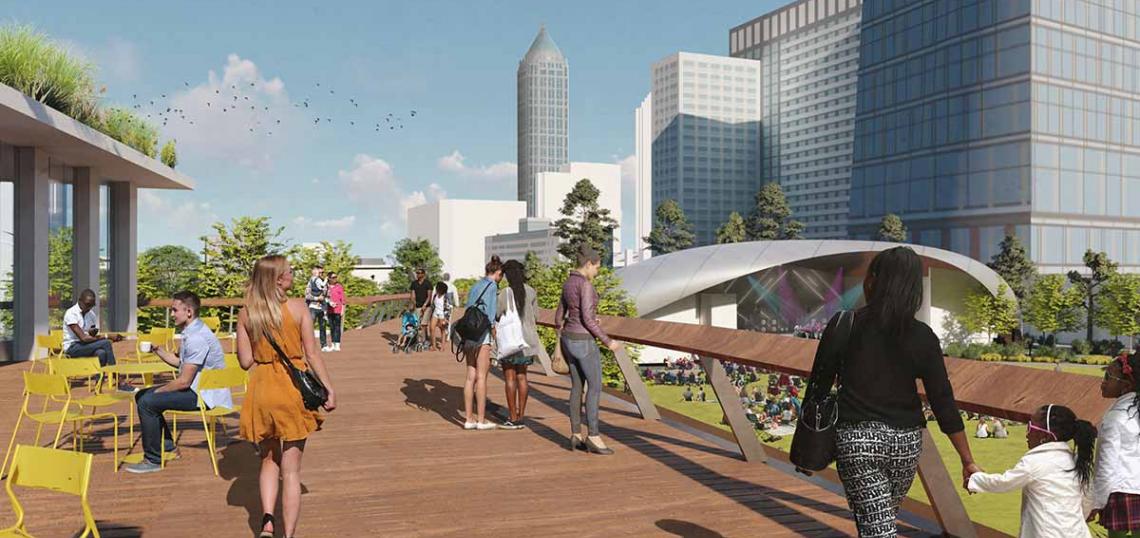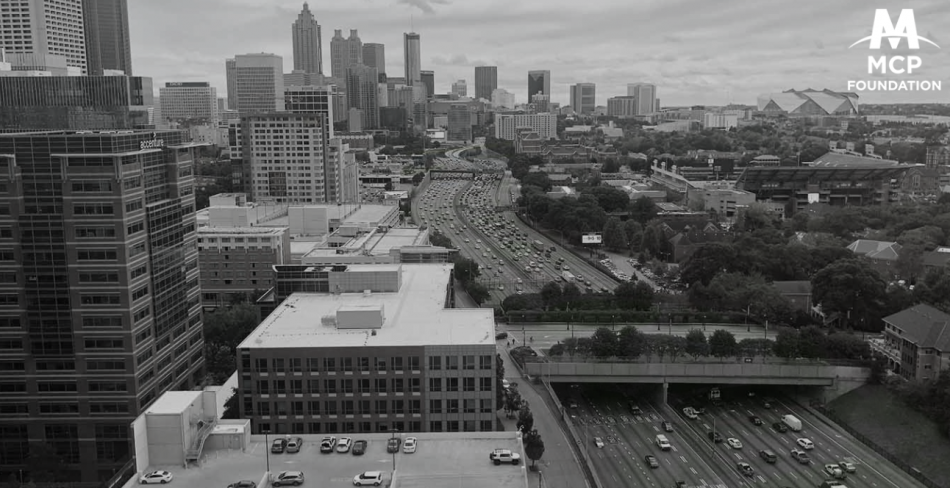An ambitious, interstate-capping greenspace project that aims to reconnect growing Atlanta districts torn apart by “a river of concrete” more than a half-century ago is entering the homestretch of a three-year feasibility study, officials tell Urbanize Atlanta.
Officially called the Midtown Connector Transportation Improvement Project, the initiative launched a website Tuesday that brims with more specific visuals and renderings. Also revealed were plans for seven upcoming virtual information sessions that will explain the project in more detail, in hopes of triggering “a robust community conversation,” as Taylor Morison of spearhead group MCP Foundation wrote in an email.
Morison says the Midtown Connector vision, at this point, is considered to be two-thirds finished with a three-year feasibility study. That included a virtual public information open house last summer that attracted more than 4,000 visitors and important input from Atlantans.
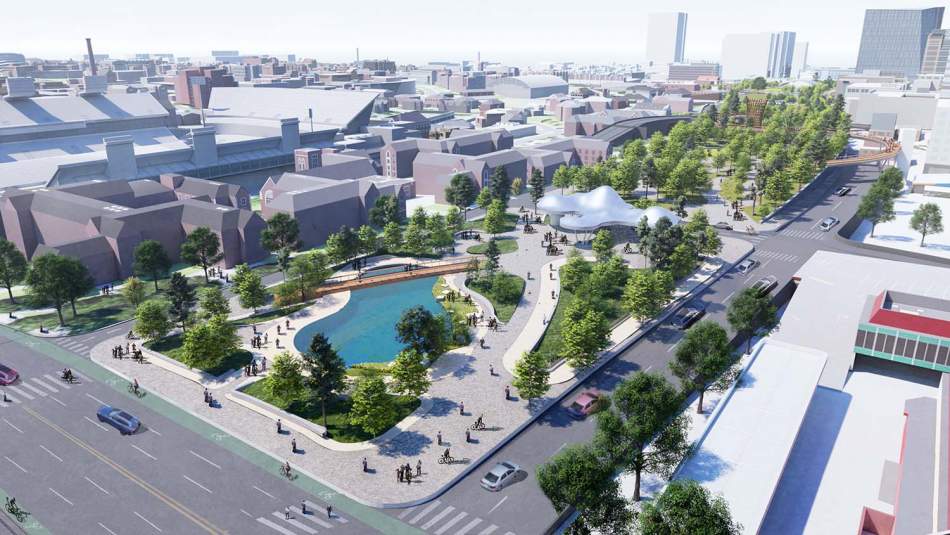 From North Avenue, with the original Varsity at bottom right. Courtesy of MCP Foundation
From North Avenue, with the original Varsity at bottom right. Courtesy of MCP Foundation
Vague plans to cap the Connector have been bandied about for generations. This one would be hugely expensive—early cost estimates range from $800 million to $1.2 billion—and no specific sources of funding have been identified.
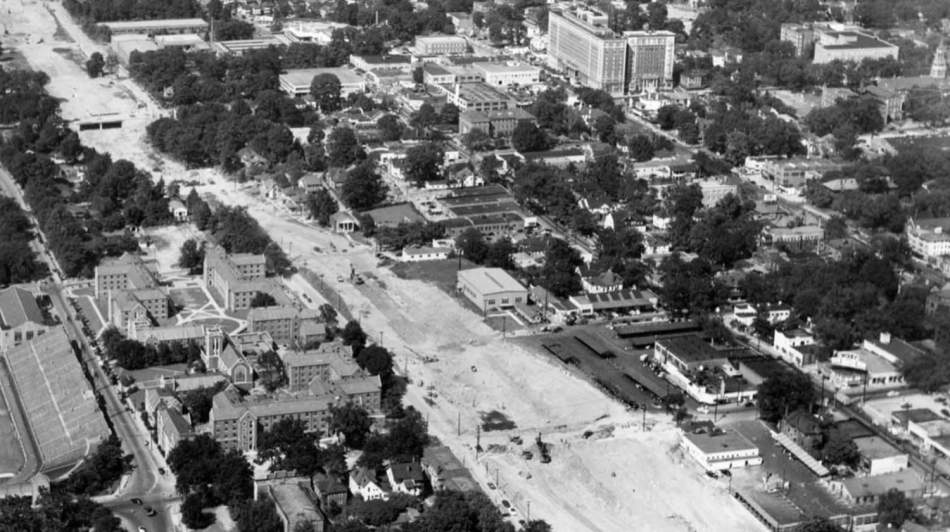 The Connector while under construction in the 1950s, with Georgia Tech's campus at left. Midtown Neighborhood Association, via MCP Foundation
The Connector while under construction in the 1950s, with Georgia Tech's campus at left. Midtown Neighborhood Association, via MCP Foundation
But this time, the formalized MCP Foundation, with leadership that includes former BeltLine CEO Paul Morris, has garnered backing from high places; Georgia Tech, Midtown Alliance, and the Georgia Department of Transportation are all lending guidance and technical support, according to the foundation.
And the consulting team for building these 25 acres over Atlanta’s main highway, stretching from 10th Street down to North Avenue, includes local and international firms with experience making similarly audacious projects happen. So far contributors include Arcadis (engineering), OLIN Partnership (landscape architecture), and Smith Dalia Architects, an Atlanta-based firm whose portfolio includes Historic Fourth Ward Park and other large-scale civic endeavors.
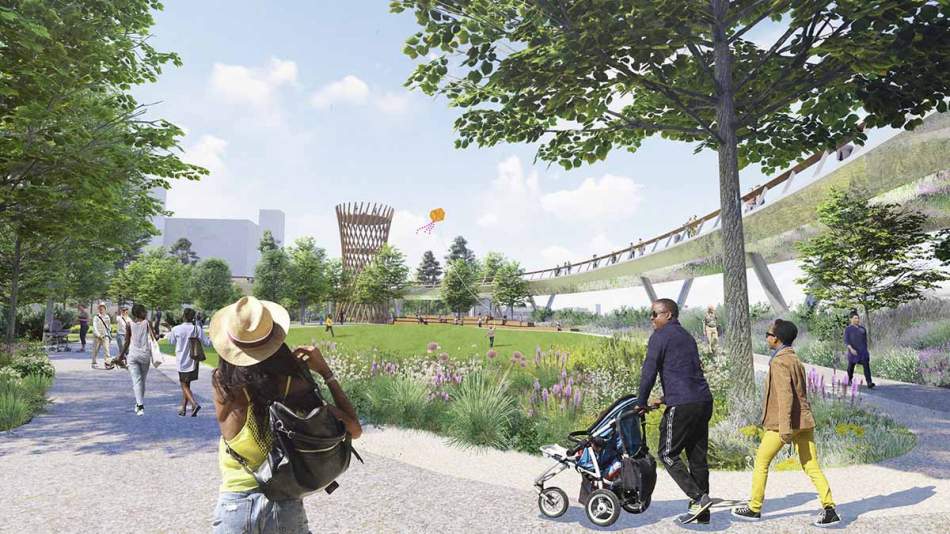 An elevated path reminiscent of those at the Atlanta Botanical Garden. Courtesy of MCP Foundation
An elevated path reminiscent of those at the Atlanta Botanical Garden. Courtesy of MCP Foundation
None of that has translated to funding for building the Midtown Connector, though. Backers have said footing the bill would require a range of public, philanthropic, and private dollars—and/or a possible new service tax district in the area around the park.
The upcoming community conversations will focus on the Midtown Connector’s benefits and public-private funding options that could make it a reality, Morison wrote.
According to the MCP Foundation, the hypothetical green ceiling on the (ironically named) Connector freeway would boost the local street network by 150 percent and protected routes for pedestrians and bikes by 3.5 miles. With exit reconfigurations, shoulder upgrades, and a new collector-distributor system, the project has the potential to reduce interstate crashes, traffic jams, and car wrecks on Midtown’s surface streets, they believe.
Aspects of renderings released Tuesday for the 10-block Midtown Connector bring to mind the swooping, elevated pathways and passive lawns of Buckhead’s 9-acre HUB404, which has recently reactivated fundraising efforts. Downtown’s 14-acre “Stitch” idea, however, appears to be slumbering for now.
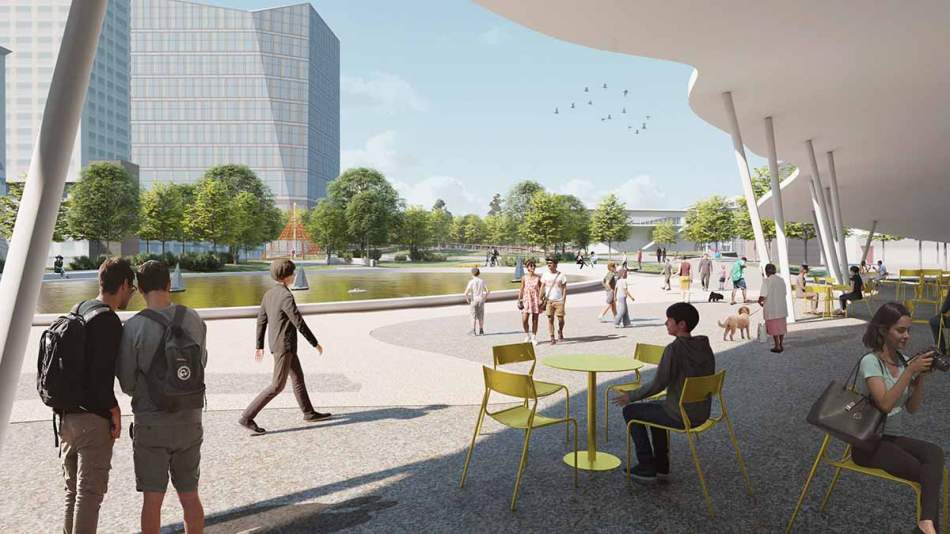 A shaded common area with views to the NCR Global Headquarters. Courtesy of MCP Foundation
A shaded common area with views to the NCR Global Headquarters. Courtesy of MCP Foundation
Have a look at the full scope of Midtown Connector visuals in the gallery above. Dates haven’t been specified, but topics for the project’s upcoming virtual forums can be viewed here. All timelines are pending.
One aspect of the park that won’t happen—dashing the long-held, unrealistic hopes of Atlanta development watchers and armchair urban planners—is an engineered river in the center of town, as responses to this open-house question made clear: “Is it possible for the park to include a man-made river with fountains and pools?”
“No,” was the MCP Foundation’s reply. “Structural loading requirements and elevations/grading of the site do not permit the possibility of a man-made river with fountains and pools; however, appropriately scaled water features are being considered.”





